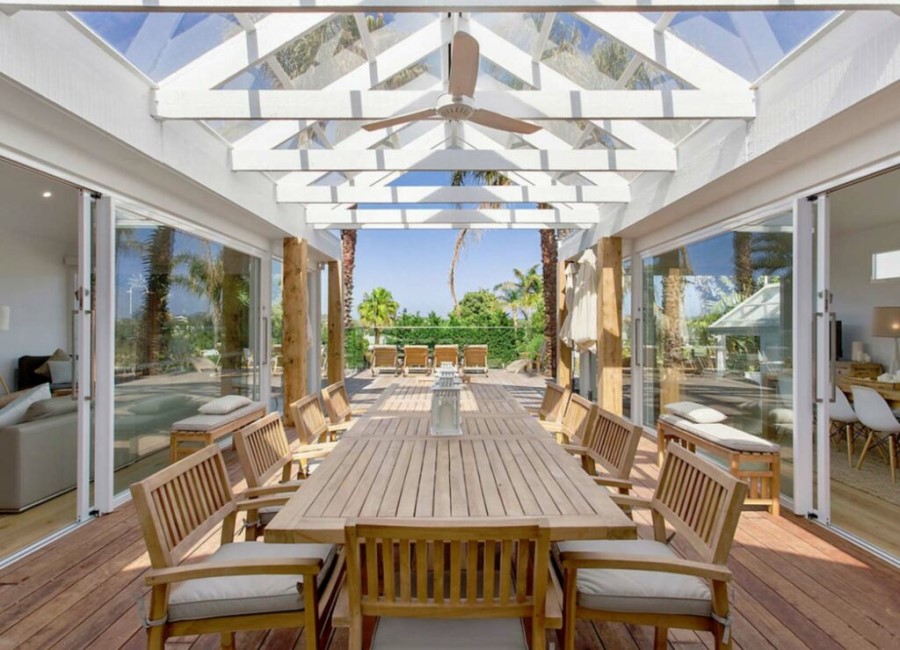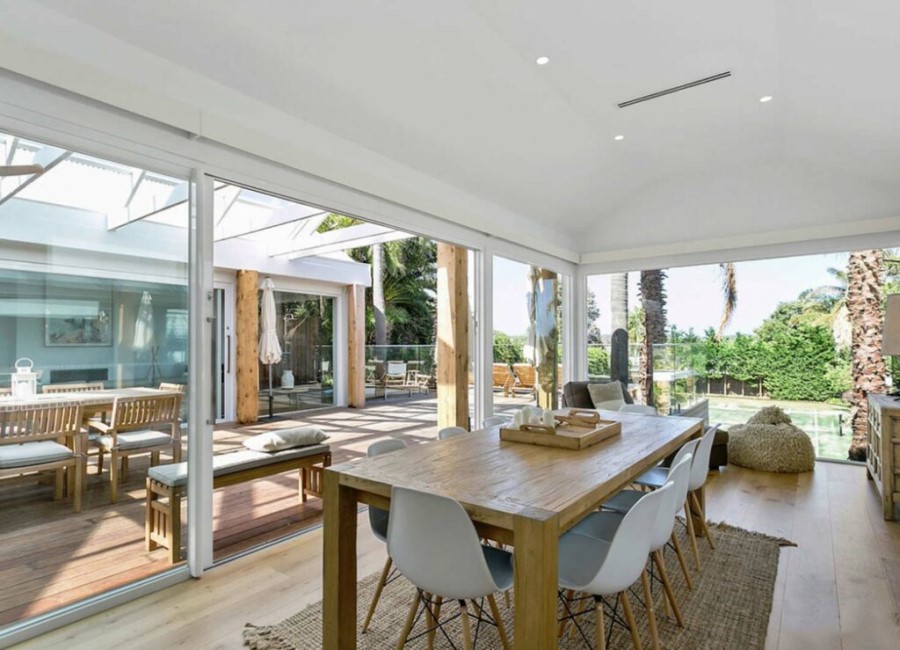Emerging Hardware Trends of the 2020s
Technology and design innovations continue to push the industry forward

As rolling hardware engineers since 1951, we've seen the window and door landscape change significantly. From the Venetian blinds of the 1960s to the arches of the 1990s, many Window + Door readers would easily be able to look back and characterize each decade's trends. So, when we look back on the 2020s, what will we see? At Anthony Innovations, we've identified a few key emerging trends.
01. Floor-to-ceiling glass
'Bigger is better' is a defining feature of this decade's windows and doors. Wider, taller panels of glass break down barriers between interiors and gardens, allowing landscaped greenery to be appreciated from the comfort of the inside. This is perfectly exemplified by Lake Flatco Architect's award-winning work River Bend Residence, where surrounding flora becomes the wallpaper to a luxurious sunken tub bathroom. Opened, these larger doors can expand living areas into breezy semi al fresco spaces for entertaining. This trend goes beyond the domestic into exciting new commercial spaces as well. Recently awarded the Harry Seidler award for Commercial Architecture, Delatite Cellar Door by Lucy Clemenger Architects uses folding, floor-to-ceiling glass doors to extend their interior restaurant onto the lush grounds of the winery.
02. Uninterrupted views
And people don't just want big views, they want big, uninterrupted views. Lower sightline systems reduce the thickness of frames, emphasizing the inside-outside effect. This creates the coveted clean, architectural feeling, but requires heavy-duty hardware to hold up.

03. Energy efficiency
Given there's demand for large, uninterrupted panes of glass, you might be surprised to hear that there's also growing demand for energy efficiency. This demand is arising out of heightened climate-consciousness and a need to mitigate the cost of living, but squaring energy efficiency with the increasing size of glass windows and doors is an engineering challenge. The market is adapting with double-glazed glass and thermal break products to prevent thermal conduction between the internal and external environments. These require tailored hardware to function uninterrupted.
04. Made to last
In keeping with the energy efficiency trend, consumers are also demanding products designed with the planet in mind. Part of this is about durability—the longer materials last, the longer they stay out of waste, and the less material needed to replace it. It's also about the environmental impact of the material's production. Our recent switch from hexavalent chromium to trivalent chromium plating was motivated by the fact that trivalent is much more easily removed from waste systems, preventing pollution.
As we move into the mid-2020s, there's no doubt that the technological and design innovations in our industry will continue advancing.


